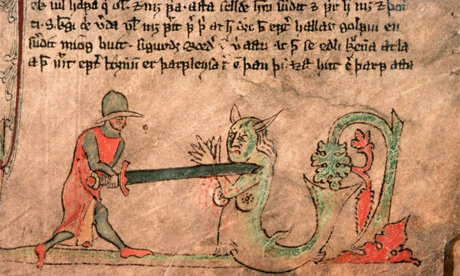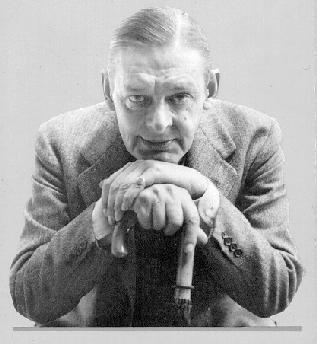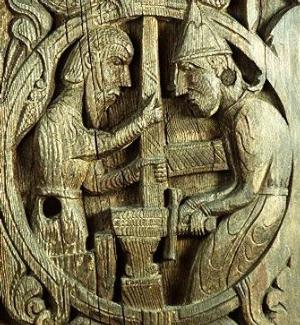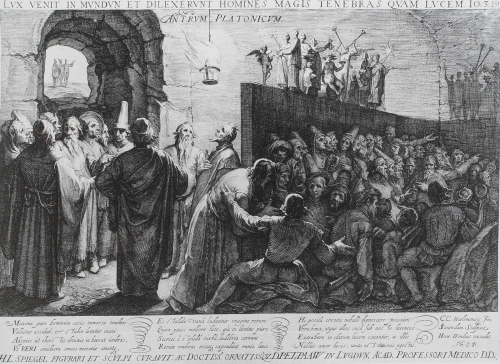
The genre of Beowulf is a topic that continues to be hotly debated, as Breizmann has already noted[1], and as any scholar working in the field will have already observed. Indeed, Beowulf scholarship concerning matters of genre goes way back to the “Age of Enlightenment” of Beowulf criticism when J.R.R. Tolkien opened the floodgates through his revolutionary essay, The Monsters and the Critics[2]. Breizmann thoroughly documents the developments after Tolkien, citing, on top of the innovative critic and author: Irving, Earl, Greenfield, and Klein; and recording their classifications of Beowulf as a “fairy tale, elegy, heroic lay, oral-formulaic poetry, historical and legendary narrative, and Christian allegory.”[3] She adds to this her own proposal of Beowulf as romance. Moreover, there are scholars such as Greenfield who have contemplated on Beowulf’s essence as a tragedy[4]. Such a variety leads one to ask whether there may be an all-encompassing label for Beowulf, one that includes every category in Breizmann’s critical compilation. In this paper, I wish to offer my own categorisation of Beowulf as an Anglo-Saxon fornaldarsaga by exploring the definition(s) of fornaldarsögur then positioning Beowulf in such a context.
What then, we may ask, are fornaldarsögur? The term fornaldarsögur (“sagas of ancient times”) is a modern term derived from Carl Christian Rafn’s original coinage, “foraldar sögur Norðurlanda,”[5] which means “sagas of ancient times in the North.” Stephen Mitchell attempts to give a very broad definition of fornaldarsögur, writing that they are “Old Icelandic prose narratives based on traditional heroic themes, whose numerous fabulous episodes and motifs create an atmosphere of unreality.”[6] Whilst such a definition agrees with the traditional opinion that “the fornaldarsögur are heroic,”[7] it falls short when tested against contemporary standards of specificity in that its description can be applied to any of five more subdivisions of the saga genre, which include: kings’ sagas, sagas of Icelanders, bishops’ sagas, Sturlunga sagas, and riddarasögur (“knightly romances”)[8]. What can be potentially ambiguous, and thus a matter of contention, in Mitchell’s definition is its lack of a hair-splitting distinction between fornaldarsögur and riddarasögur. Torfi Tulinius, however, allows for a distinct separation between the two categories, writing that
the fornaldarsögur all take place in the North and deal with Nordic heroes but the riddarasögur take place in the south of Europe or even more remote places, and the heroes are “valiant knights” who were infrequent visitors here in the North. Furthermore, some literary characteristics distinguish between these groups of sagas[9].
Jakobsson clarifies what exactly these distinguishing literary characteristics are: “The tragic end of traditional fornaldarsögur – e.g. Hálfs saga, Hrólfs saga kraka, and Völsunga saga – also distinguishes them from adventure sagas and romance in general.”[10] Hermann Pálsson further divides the fornaldarsögur into two categories: “heroic legend” and “adventure tales.”[11] Tulinius explains that “the former are based on the same ancient heroic tradition in the tragic mode as the lays of the Edda and have links with similar traditions in other Germanic languages”; the “‘adventure tales’ usually end well about heroes undertaking a quest or series of quests.”[12] And while there is, as yet, and despite all the aforementioned criticisms, no clear-cut authoritative definition for fornaldarsögur, Clunies-Ross provides two essential characteristics that many works which are considered fornaldarsögur share. She posits that firstly, “a number of fornaldarsögur represent a world of Scandinavian royal and heroic dynasties”[13] and that, secondly, the characters in the stories “frequently interact with beings that are not fully human.”[14]
In Beowulf, the first point in Clunies-Ross’ characterization of fornaldarsögur – its depiction of Scandinavian royal and heroic dynasties – becomes a major axis upon which the work’s action revolves. The poem’s narrator begins with “Hwæt wé Gár-Dena,”[15] invoking, through the use of the first-person plural pronoun “wé,” the Danish identity of both the speaker and his audience. Magennis notes, moreover, of the emphatic placement of “Gár-Dena” in Beowulf’s opening line. In light of this, Howe explains that “the setting of Beowulf may be understood as the homeland before conversion,”[16] and thus the “stories about the Danes and the Geats could serve as a powerful reminder of the Anglo-Saxon’s origins, both geographically and religiously.”[17] And if we are to divide the poem into two halves based on setting, the first being in Denmark, and the second in Geatland, we may observe in the first half an almost panoramic attention to the house of the Scyldings, the descendants of “héah Healfdene” (“the great Halfdane”)[18]. Indeed, while the first half marks the actions of the poem’s titular hero, it also prefigures and laments the downfall of the Scylding household: “nalles fácen-stafas / Þéod-Scyldingas þenden fremedon” (“The Scylding nation / was not yet familiar with feud and betrayal,” ll. 1018-1019). Such events as are referred to in Beowulf thus accentuate its essence as a fornaldarsaga, in that it “display[s] a lengthy continuity within the Nordic cultural context.”[19] Consequently, the poem aligns itself not only with Icelandic kings’ sagas such as Heimskringla[20] and Skjöldunga saga, but, more importantly, with other fornaldarsögur as well, such as Hrólfs saga kraka and Völsunga saga.
It is not surprising then, that, as North argues, “…the poet appears to draw on the unquantifiable sources of a living Danish mythology. Respectively he plays on Freyja’s Brísinga men, Óðinn’s vengeance for Baldr, and Þórr’s death by the World Serpent.”[21] Along with the quasi-mythological atmosphere of Beowulf and fornaldarsögur come the monsters and otherwordly beings. The world that their presence invokes is a world “when Scandinavia was still pagan,” and thus “the action of [fornaldarsögur] was removed from the world of the everyday, at least in part, but not so fully removed that its subject-matter could not be meaningful to [the audience].”[22] In this sense, it is difficult to fully agree with Tolkien when he writes that “it is just because the main foes in Beowulf are inhuman that the story is larger and more significant…It glimpses the cosmic and moves with the thought of all men concerning the fate of human life and efforts; it stands amid but above the petty wars of princes, and surpasses the dates and limits of historical periods, however important.”[23] In ignoring the antiquarian historicity—the reality of the pagan world—alluded to in the poem, we take away not only the full force of the Þórr myth as it is ascribed to Beowulf and his fight against the dragon[24], but also the pathos that the audience, the “Gár-Dena in géar-dagum,” are meant to feel towards their pagan ancestors. Black, et al. put the situation in a better perspective: “Whatever its underlying structural patterns, Beowulf is neither myth nor folktale; its stories of dragon-slaying and nocturnal struggles are set against a complex background of legendary history.”[25] This is what makes Beowulf a unique work of literature in the Old English tradition. Not only does it seem somewhat out of place with its “foreign-ness” (in terms of its Nordic connection) when compared with other Old English heroic poems like Judith (which stems from Biblical tradition) and The Battle of Maldon (which is set in Anglo-Saxon England), but the presence of the monsters, especially the dragon, invokes the mythic climate of the Eddas and other fornaldarsögur. Thus, it is easy to see how Richard North comes to observe there to be a growing consensus that the poet of Beowulf adapts tales connected with those of Norse mythology: Freyja’s Brísingamen; Höðr’s slaying of Baldr and Óðinn’s vengeance; and Þórr’s battle against the World Serpent,’’[26] since Beowulf belongs to what Tulinius calls “the Matter of the North” and its vast range of saga literature, as much as it belongs to the English—specifically Anglo-Saxon—tradition of poetry.
Categorising Beowulf as an Anglo-Saxon fornaldarsaga helps give us a wider perspective of the work’s historicity. It is among the many sagas that deal with Scandinavian heroic royalty, and one amongst many more that incorporate the mythic and legendary “past” of its contemporary audience, reworking themes and motifs that help(ed) shape their society and burgeoning nations. Such a grouping thus removes Beowulf from isolation and assimilates it into the wealth of Icelandic fornaldarsögur that give it context, removing our need to force it into labels which may undermine its historical and structural richness. Being a fornaldarsaga, it becomes at once a folktale, a tragedy, a romance, as well as a historical and legendary narrative.
Bibliography:
Beowulf, in The Broadview Anthology of British Literature, eds. Joseph Black et al. (Toronto: Broadview Press, 2016), 65-116.
Breizmann, Natalia. “”Beowulf” as Romance: Literary Interpretation as Quest.” MLN 113, no. 5 (1998): 1022-035.
Fjalldal, Magnus. “An Unnoticed “Beowulf” Analogue in “Heimskringla.”(Critical Essay).” Notes and Queries 60, no. 3 (2013): 341-43.
Greenfield, Stanley. “”Beowulf” and Epic Tragedy.” Comparative Literature 14 (1962): 91.
Heaney, Seamus. Beowulf. London: Faber and Faber, 1999.
Howe, Nicholas, “Beowulf and the Ancestral Homeland,” in The Postmodern Beowulf: A Critical Casebook, edited by Eileen A. Joy and Mary K. Ramsey, 49-89. Morgantown: West Virginia University Press, 2006.
Jakobsson, Armann. “The Royal Ideology and Genre of Hrolfs Saga Kraka.” Scandinavian Studies 71, no. 2 (1999): 139.
Magennis, Hugh. The Cambridge Introduction to Anglo-Saxon Literature. Cambridge Introductions to Literature. Cambridge ; New York: Cambridge University Press, 2011.
Mitchell, Stephen A. Heroic Sagas and Ballads. Myth and Poetics. Ithaca: Cornell University Press, 1991.
North, Richard. The Origins of Beowulf : From Vergil to Wiglaf. Oxford ; New York: Oxford University Press, 2006.
Ross, Margaret Clunies. The Cambridge Introduction to the Old Norse-Icelandic Saga. Cambridge Introductions to Literature. Cambridge: Cambridge University Press, 2010.
—. A History of Old Norse Poetry and Poetics. Cambridge, UK ; Rochester, NY: D.S. Brewer, 2005.
—. Old Icelandic Literature and Society. Cambridge Studies in Medieval Literature ; 42. Cambridge, U.K. New York: Cambridge University Press, 2000.
Stefán Einarsson. A History of Icelandic Literature. New York: Johns Hopkins Press for the American -Scandinavian Foundation, 1957.
Tolkien, J. R. R., and Tolkien, Christopher. The Monsters and the Critics, and Other Essays. London ; Boston: Allen & Unwin, 1983.
[1] Natalia Breizmann. “”Beowulf” as Romance: Literary Interpretation as Quest.” MLN 113, no. 5 (1998): 1022.
[2] J.R.R. Tolkien, The Monsters and the Critics, and Other Essays. (London ; Boston: Allen & Unwin, 1983).
[3] 1022.
[4] Stanley Greenfield, “”Beowulf” and Epic Tragedy.” Comparative Literature 14 (1962).
[5] Margaret Clunies-Ross, The Cambridge Introduction to the Old Norse-Icelandic Saga. Cambridge Introductions to Literature. (Cambridge: Cambridge University Press, 2010), 28.
[6] Stephen Mitchell, Heroic Sagas and Ballads. Myth and Poetics. (Ithaca: Cornell University Press, 1991), 27.
[7] Ármann Jakobsson, “The Royal Ideology and Genre of Hrolfs Saga Kraka.” Scandinavian Studies 71,no. 2 (1999): 142.
[8] Cf. Ibid.
[9] Cf. Jakobsson, 143.
[10] Ibid.
[11] Torfi Tulinius, “The Matter of the North: fiction and uncertain identities in thirteenth century Iceland” in Margaret Clunies-Ross, Old Icelandic Literature and Society, Cambridge Studies in Medieval Literature ; 42. Cambridge, U.K. (New York: Cambridge University Press, 2000), 243.
[12] Ibid.
[13] The Cambridge Introduction to the Old Norse-Icelandic Saga, 76.
[14] Ibid, 77.
[15] All lines from Beowulf here (in the original and in translation) are taken from Seamus Heaney’s version(1999).
[16] Nicholas Howe, “Beowulf and the Ancestral Homeland,” in The Postmodern Beowulf: A Critical Casebook, edited by Eileen A. Joy and Mary K. Ramse. (Morgantown: West Virginia University Press, 2006) 52.
[17] p. 53.
[18] line 57.
[19] Mitchell, 27.
[20] Cf. Magnus Fjalldal, “An Unnoticed “Beowulf” Analogue in “Heimskringla.”(Critical Essay).” Notes and Queries 60, no. 3 (2013): 341-43.
[21] Richard North, The Origins of Beowulf : From Vergil to Wiglaf. (Oxford ; New York: Oxford University Press, 2006), 194.
[22] Clunies-Ross, The Old Norse-Icelandic Saga, 58.
[23] J.R.R. Tolkien, The Monsters and the Critics, and Other Essays. (London ; Boston: Allen & Unwin, 1983), 33.
[24] Cf. North, 202.
[25] Beowulf, in The Broadview Anthology of British Literature, eds. Joseph Black et al. (Toronto: Broadview Press, 2016), 66.
[26] And here North cites substantially: “Dronke, ‘Beowulf and Ragnarök’, 311—18. D.G. Calder, ‘Setting and Ethos: The Pattern of Measure and Limit in Beowulf’, SP 69 (1972), 21 – 37, esp. 36. Frank, ‘Skaldic Verse and the Date of Beowulf’, 132 (Baldr and Óðinn). Beowulf: A Student Edition, ed. Jack, 101 (Brísingamen). Beowulf, ed. Mitchell and Robinson, 134 (Baldr and Óðinn). Orchard, Companion, 114-23 (all three motifs). Rauer, Beowulf and the Dragon, 136-7 (Þórr and the World Serpent). Niles (Beowulf, 193) is against, albeit he believes Beowulf was composed partly for Anglicized tenth-century Danes” (Cf. North, p. 205).




 In this essay I argue that the Old English elegies “The Wanderer” and “The Seafarer” demonstrate the instability and fragility of Anglo-Saxon society. The reason for such instability is that the members of the un-Christian Anglo-Saxon society have no knowledge of God nor subsequently could they have any relationship with him. My analogies are based primarily on Plato’s “Myth of the Cave” from Book 7 of The Republic, and shall be furthermore expounded upon with Plotinus’ writing “On the Intellectual Beauty”. After discussing the essential content of Plato’s myth and the relationship thereof with Plotinus’ work, I shall apply them both as filters for my interpretation first to “The Wanderer”, and then to “The Seafarer”.
In this essay I argue that the Old English elegies “The Wanderer” and “The Seafarer” demonstrate the instability and fragility of Anglo-Saxon society. The reason for such instability is that the members of the un-Christian Anglo-Saxon society have no knowledge of God nor subsequently could they have any relationship with him. My analogies are based primarily on Plato’s “Myth of the Cave” from Book 7 of The Republic, and shall be furthermore expounded upon with Plotinus’ writing “On the Intellectual Beauty”. After discussing the essential content of Plato’s myth and the relationship thereof with Plotinus’ work, I shall apply them both as filters for my interpretation first to “The Wanderer”, and then to “The Seafarer”.


